![]()
| Erythrocytes are more commonly known as red blood cells. They contain no nuclei or organelles and have a biconcave discoid shape to increase its surface area for gas exchange. They are used in oxygen transportation from lungs to tissues, and carbon dioxide transportation from tissues to lungs. Erythrocytes contain haemoglobin, which is an oxygen-carrying pigment that gives blood its red colour. |
 |
|
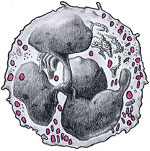 |
|
|
| Basophils are the least abundant blood leucocyte and play an important role in allergic responses and also play a role in immunity against parasites. The granule contents include histamine and heparin. |
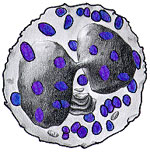 |
|
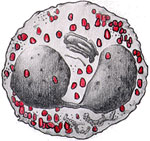 |
Eosinophils contain a distinct bi-lobed nucleus and are important in the response to parasitic and allergic diseases. They release their cell contents onto larger pathogens and can also undergo phagocytosis. Their products are anti-inflammatory and can inactivate mast cell products. |
|
Monocytes circulate in the blood for approximately 8 hours before migrating into the tissues, where they differentiate into macrophages. They undergo phagocytosis and remove antigens. |
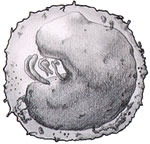 |
|
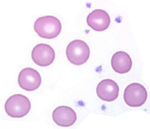 |
|
|
|
|
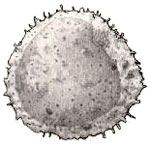 |
|